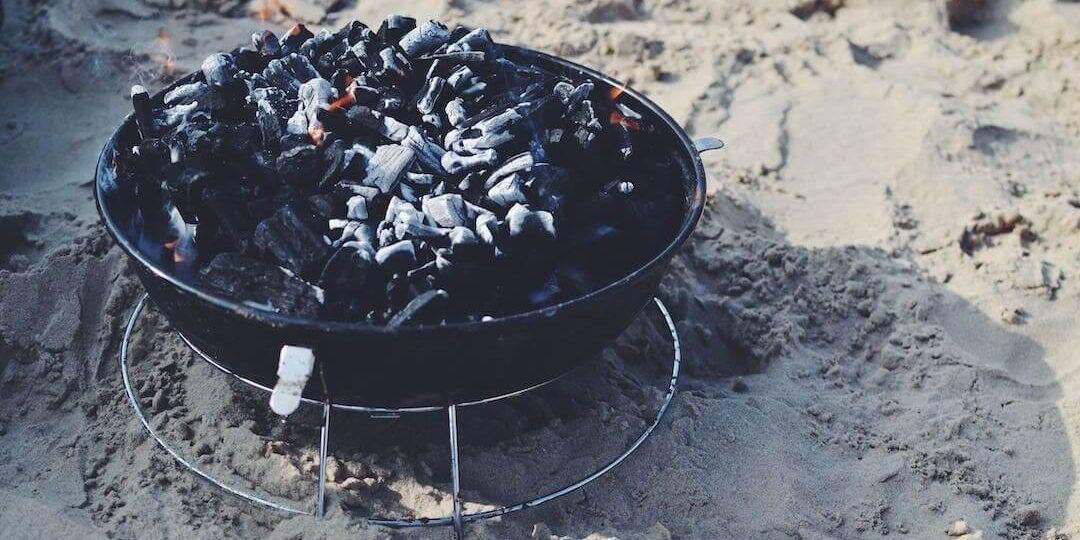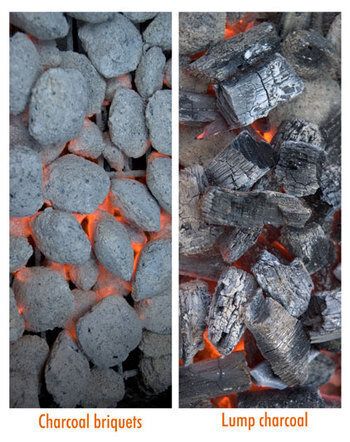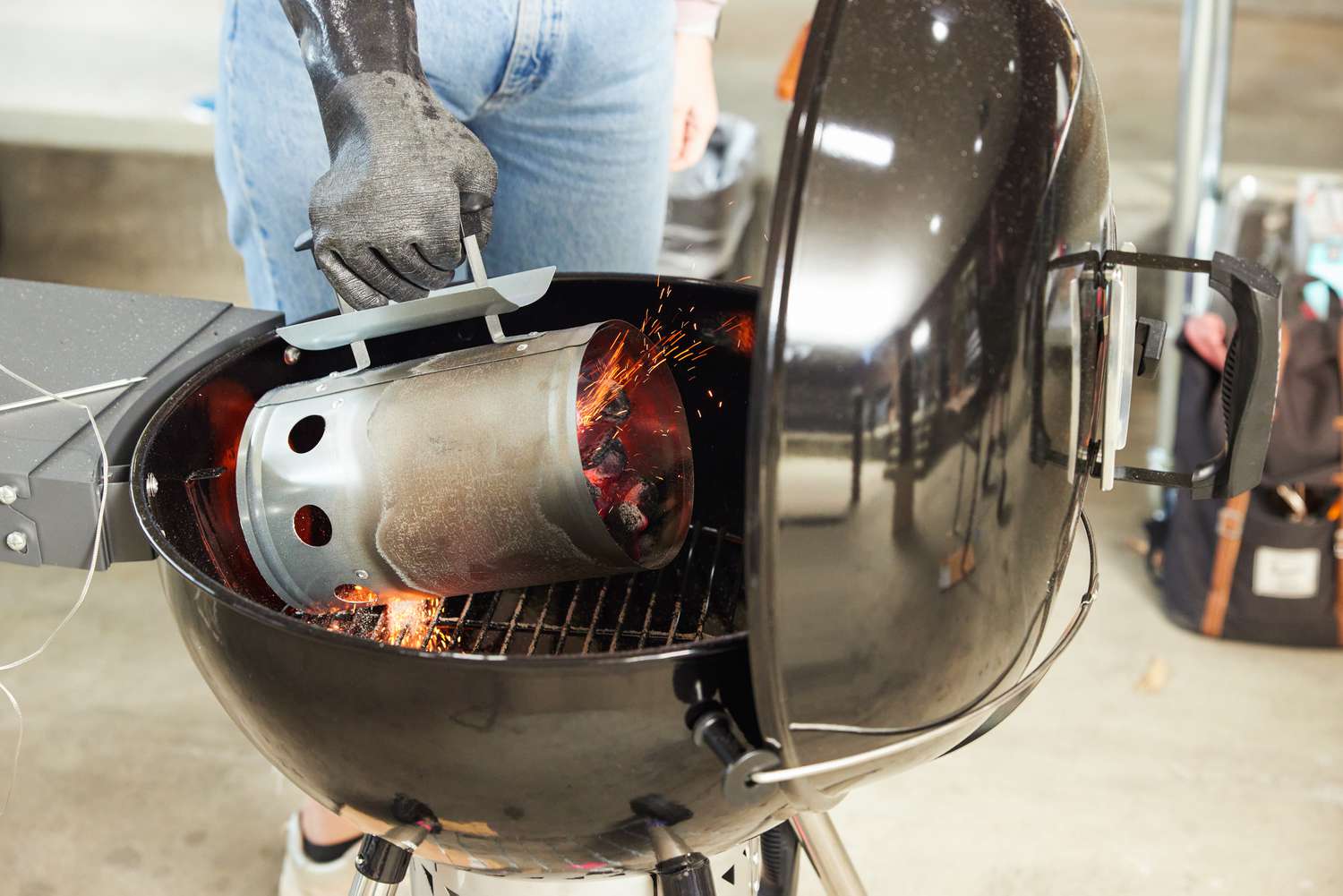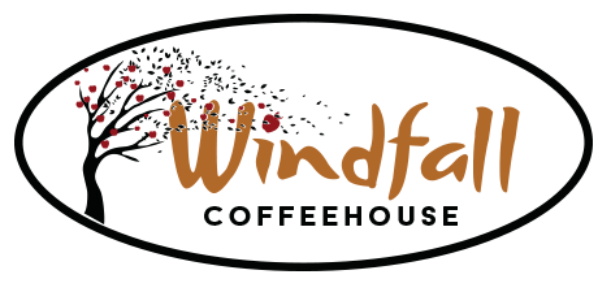
Introduction
The Importance Of Knowing How Long Charcoal Lasts
Knowing how long charcoal lasts is crucial for a successful grilling experience. It not only ensures that you have enough fuel to cook your food but also helps in achieving the desired flavor and even cooking. By understanding the factors that affect the duration of charcoal burn time, you can make informed decisions when selecting the right type of charcoal and managing your grilling process effectively.
Factors That Affect The Duration Of Charcoal
Several factors contribute to the duration of charcoal burn time. These include:
- Charcoal or briquette quality and composition: The type and quality of charcoal or briquettes you choose can greatly impact the burn time. Higher-quality charcoal tends to burn longer and more evenly.
- Charcoal layout: The way you arrange the charcoal in your grill can influence burn time. A tightly packed, uniform layout tends to burn slower and last longer compared to a loose and scattered arrangement.
- Grill size and shape: The size and shape of your grill can also affect how long charcoal remains hot. A smaller grill may require less charcoal and burn out quicker, while a larger grill may require more charcoal and have a longer burn time.
- Environmental factors: The ambient temperature, wind conditions, and humidity levels can affect the burn time of charcoal. Windy and colder conditions may result in faster burning, while calm and warm conditions may prolong the burn time.
- Grilling techniques: Factors such as vent control, oxygen flow, and the use of charcoal accessories can impact burn time. Controlling the airflow in your grill can help manage the burn time more effectively.
While these guidelines provide a general idea of what to expect in terms of charcoal burn time, it’s important to remember that individual circumstances and grilling techniques may vary. By considering these factors and experimenting with different charcoal types and arrangements, you can maximize the life of your charcoal fuel and enhance your grilling experience.
Types Of Charcoal
Lump Style Charcoal
Lump charcoal is made from natural wood, typically hardwood. It is produced by burning wood in the absence of oxygen, leaving behind carbon-rich pieces of charred wood. Here are some key points about lump charcoal:
- Lump charcoal burns hotter and faster compared to briquettes.
- It produces less ash, which makes cleaning easier.
- The irregular shape of the lump charcoal can affect airflow and may require more attention to maintain consistent heat.
- It is often preferred by grilling enthusiasts for its natural flavor and minimal additives.
- However, lump charcoal can be more expensive than briquettes.
Briquettes And Their Differences With Lump Charcoal
Briquettes, on the other hand, are made from a combination of charcoal and other ingredients, such as binders, fillers, and additives. They are produced by compressing charcoal dust or fines into consistent shapes. Here are some key points about briquettes:
- Briquettes are more uniform in shape and size, which allows for more consistent heat distribution.
- They tend to burn longer and more steadily compared to lump charcoal.
- Briquettes produce more ash compared to lump charcoal, which may require more frequent cleaning.
- They are generally more affordable and readily available compared to lump charcoal.
- Some briquettes may contain additives, such as lighter fluid, for easier ignition.
Both lump charcoal and briquettes have their own advantages and drawbacks, and the choice between them ultimately depends on personal preference and the specific grilling needs. It’s worth experimenting with both to determine which type suits your grilling style and desired results. Remember to consider the factors mentioned earlier, such as charcoal layout and grill size, to optimize the duration of charcoal burn time.
Burn Time Of Lump Style Charcoal
Average Duration Of Lump Style Charcoal
Lump style charcoal burns relatively hot and fast compared to briquettes. On average, it can last for around 45 minutes when used in an open grill. However, please note that the coal will remain lit for over an hour, but it won’t produce high heat anymore.
Factors That Influence The Burn Time Of Lump Style Charcoal
The burn time of lump style charcoal depends on various factors, including:
- Charcoal quality: The carbon content of the wood used to make the charcoal affects its burn time. Lump charcoal with a higher carbon content tends to release more heat and burn longer.
- Airflow: The irregular shape of lump charcoal can affect airflow within the grill. This may require more attention to maintain consistent heat and may impact the burn time.
- Grill temperature: The cooking temperature you maintain can affect the burn time of the charcoal. Higher temperatures may cause the charcoal to burn faster.
- Charcoal layout: How the charcoal is arranged in the grill can also influence the burn time. A compact arrangement may allow for longer burn time compared to a loose arrangement.
- Grill size: The size of the grill can impact the burn time of the charcoal. A smaller grill may retain heat better and allow for a longer burn time.
- Grilling style: Different grilling techniques and the duration of cooking can affect the overall burn time of the charcoal.
Considering these factors can help you optimize the burn time of lump style charcoal and achieve the desired results for your grilling needs. Keep in mind that experimenting with different techniques and charcoal types is the best way to determine what works best for you.
Burn Time Of Lump Style Charcoal
Average Duration Of Lump Style Charcoal
Lump style charcoal has an average burn time of around 45 minutes when used in an open grill. However, it should be noted that although the coals will remain lit for over an hour, they won’t produce as much heat as they initially did.
Factors That Influence The Burn Time Of Lump Style Charcoal
Several factors can affect the burn time of lump style charcoal:
- Charcoal quality: The carbon content of the wood used to make the charcoal plays a significant role in its burn time. Lump charcoal with a higher carbon content tends to release more heat and burn longer.
- Airflow: The irregular shape of lump charcoal can affect the airflow within the grill. This irregularity may require more attention to maintain consistent heat, which can impact the burn time.
- Grill temperature: The cooking temperature maintained during grilling can also affect the burn time of the charcoal. Higher temperatures may cause the charcoal to burn faster.
- Charcoal layout: How the charcoal is arranged in the grill can influence the burn time. A compact arrangement may allow for a longer burn time compared to a loose arrangement.
- Grill size: The size of the grill can impact the burn time of the charcoal. A smaller grill may retain heat better, leading to a longer burn time.
- Grilling style: Different grilling techniques and the duration of cooking can affect the overall burn time of the charcoal.
Considering these factors can help grillers optimize the burn time of lump style charcoal and achieve their desired grilling results. Experimenting with different techniques and charcoal types is the best way to determine what works best for individual preferences and grilling needs.

Quality Of Raw Materials
The duration of charcoal burn time is significantly influenced by the quality of the raw materials used in its production. Here are some important factors to consider regarding the impact of raw materials on burn time and how to choose charcoal with better burn time based on raw materials:
Impact Of Quality Of Raw Materials On Burn Time
- Carbon Content: The carbon content of the raw materials used to make charcoal directly affects its burn time and heat output. Charcoal with higher carbon content tends to release more heat when burned, resulting in a longer burn time.
- Wood Type: The type of wood used can also impact the burn time. Hardwoods like oak and hickory tend to have higher carbon content and therefore burn longer compared to softwoods like pine.
- Moisture Content: The moisture content of the wood used in charcoal production can affect the burn time. Higher moisture content can lead to longer ignition times and a decrease in overall burn time.
How To Choose Charcoal With Better Burn Time Based On Raw Materials
- Look for higher carbon content: Charcoal made from hardwoods with higher carbon content will generally have a longer burn time. Check the product label or manufacturer’s information to determine the carbon content of the charcoal.
- Opt for hardwood charcoal: Choosing charcoal made from hardwoods like oak, hickory, or maple can result in a longer burn time compared to charcoal made from softwoods.
- Ensure low moisture content: Charcoal with lower moisture content will ignite more quickly and provide a longer burn time. Look for charcoal that has been properly dried and has minimal moisture.
- Consider blended charcoals: Some charcoal products may be a blend of different woods, which can enhance both the flavor and the burn time. Experimenting with blended charcoals can help you find the best option for your grilling needs.
By considering the quality of raw materials and choosing charcoal with a higher carbon content, hardwoods, and low moisture content, you can optimize the burn time for your grilling sessions. Experimenting with different charcoal types and techniques will help you find the best charcoal for your preferences and achieve the desired results.
Different Cooking Techniques
When it comes to grilling, there are different techniques that can be used, each requiring a different duration of charcoal burn time. Let’s take a closer look at two popular cooking techniques and their impact on charcoal burn time.
Direct Grilling
Direct grilling involves cooking food directly over the charcoal. Whether you’re grilling a bacon weave, heating up a rotisserie, or searing a steak, this technique usually requires a charcoal burn time of about 2-3 hours for lump style charcoal and 4-5 hours for briquettes. It’s important to note that the actual burn time can vary depending on factors such as the quality of the charcoal and external conditions like cold, dampness, or wind.
Using Rotisserie And Searing
For those using a rotisserie or searing their food, the charcoal burn time remains consistent with direct grilling. Lump style charcoal typically lasts about 2-3 hours, while briquettes can last 4-5 hours. However, it’s worth mentioning that the burn time can be affected by the quality of the raw materials used in the charcoal production. Charcoal with additives may have a shorter burn time.
It’s important to consider the burn time of charcoal while planning your grilling sessions. Depending on the cooking technique and the duration of your gathering, you may need to adjust the amount of charcoal accordingly. Additionally, factors such as weather conditions and the type of food being cooked can also impact the charcoal burn time.
By understanding the different cooking techniques and their impact on charcoal burn time, you can ensure that you have enough charcoal to cook your food thoroughly. It’s also helpful to experiment with different types of charcoal and techniques to find the best option that suits your grilling needs.
Charcoal Management Tips
How To Maximize The Duration Of Charcoal
One of the key factors in maximizing the duration of charcoal burn time is how you manage your grilling process. Here are some tips to help you get the most out of your charcoal:
- Arrange the charcoal strategically: When preparing your charcoal for grilling, make sure to arrange it in a way that allows for proper airflow. This will help the charcoal burn more efficiently and last longer.
- Use the right amount of charcoal: Using too much charcoal can lead to unnecessary waste, while using too little may result in insufficient heat for cooking. It’s important to find the right balance and use only the amount of charcoal necessary for your grilling needs.
- Monitor the burn time: Keep an eye on the burn time of your charcoal to determine when it needs to be replenished. This will prevent the charcoal from burning out completely and allow you to add more charcoal at the right time.
Storing And Preserving Charcoal Properly
Proper storage and preservation of charcoal is crucial in maintaining its quality and maximizing its lifespan. Here are some tips for storing charcoal:
- Keep it dry: Moisture can deteriorate the quality of charcoal and make it less efficient. Store your charcoal in a dry place, away from any sources of moisture.
- Use airtight containers: To prevent exposure to air and moisture, consider storing your charcoal in airtight containers or resealable bags. This will help retain its quality and prevent unnecessary waste.
- Protect it from extreme temperatures: Extreme heat or cold can affect the burn time of charcoal. Avoid storing it in places where it could be exposed to extreme temperatures, such as garages or sheds without climate control.
By following these tips and taking proper care of your charcoal, you can ensure a longer burn time and make the most out of your grilling sessions. Remember to always consider the cooking technique, the amount of charcoal needed, and the conditions in which you’ll be grilling to optimize the duration of charcoal burn time.

Comparison With Other Fuel Sources
How Does Charcoal Compare To Propane In Terms Of Burn Time?
Charcoal and propane are two popular fuel sources for grilling, but they differ in terms of burn time. Here is a comparison between the two:
- Charcoal: On average, a charcoal grill takes 15-20 minutes longer to heat than other fuels like gas or electric. This means that if you are on a time crunch or do not have the time available to light the charcoals earlier in advance, then charcoal fuel may not be recommended.
- Propane: Propane grills, on the other hand, heat up much faster than charcoal grills. They can reach cooking temperature within minutes, which makes them a convenient option if you’re short on time.
Other Alternative Fuel Sources For Grilling And Their Burn Time
Apart from charcoal and propane, there are other fuel sources available for grilling. Here is a comparison of their burn time:
- Electric: Electric grills offer quick and consistent heat, similar to propane grills. They are easy to use and require minimal cleanup. However, they may not provide the same flavor as charcoal grills.
- Natural Gas: Natural gas grills offer the convenience of a continuous fuel supply, as they are connected to a gas line. They heat up quickly, like propane grills, and eliminate the need for propane tank refills.
- Wood: Using wood chunks or chips for grilling provides a unique smoky flavor to your food. However, wood grilling requires more time and effort to maintain a consistent heat level compared to charcoal or gas grilling.
- Pellets: Pellet grills use compressed wood pellets as fuel, offering the benefits of both wood and gas grills. They provide a smoky flavor and consistent heat, but may require more time for initial heat-up compared to gas grills.
In summary, charcoal grills may take longer to heat up and require more time for cleanup compared to other fuel sources like propane, electric, natural gas, wood, or pellets. Choosing the right fuel source depends on factors such as desired flavor, convenience, and time constraints.
Comparison with Other Fuel Sources
How does charcoal compare to propane in terms of burn time?
Charcoal and propane are two popular fuel sources for grilling, but they differ in terms of burn time. Here is a comparison between the two:
- Charcoal: On average, a charcoal grill takes 15-20 minutes longer to heat than other fuels like gas or electric. This means that if you are on a time crunch or do not have the time available to light the charcoals earlier in advance, then charcoal fuel may not be recommended.
- Propane: Propane grills, on the other hand, heat up much faster than charcoal grills. They can reach cooking temperature within minutes, which makes them a convenient option if you’re short on time.
Other alternative fuel sources for grilling and their burn time
Apart from charcoal and propane, there are other fuel sources available for grilling. Here is a comparison of their burn time:
- Electric: Electric grills offer quick and consistent heat, similar to propane grills. They are easy to use and require minimal cleanup. However, they may not provide the same flavor as charcoal grills.
- Natural Gas: Natural gas grills offer the convenience of a continuous fuel supply, as they are connected to a gas line. They heat up quickly, like propane grills, and eliminate the need for propane tank refills.
- Wood: Using wood chunks or chips for grilling provides a unique smoky flavor to your food. However, wood grilling requires more time and effort to maintain a consistent heat level compared to charcoal or gas grilling.
- Pellets: Pellet grills use compressed wood pellets as fuel, offering the benefits of both wood and gas grills. They provide a smoky flavor and consistent heat, but may require more time for initial heat-up compared to gas grills.
In summary, charcoal grills may take longer to heat up and require more time for cleanup compared to other fuel sources like propane, electric, natural gas, wood, or pellets. Choosing the right fuel source depends on factors such as desired flavor, convenience, and time constraints.
Conclusion
Summary of key points
- Charcoal grills take longer to heat up compared to propane, electric, natural gas, wood, or pellet grills.
- Propane grills offer faster heat-up time and are convenient for those short on time.
- Electric grills provide quick and consistent heat but may lack the same flavor as charcoal grills.
- Natural gas grills provide a continuous fuel supply and eliminate the need for propane tank refills.
- Wood grilling offers a smoky flavor but requires more effort to maintain temperature.
- Pellet grills combine the benefits of wood and gas grills but may require more time for initial heat-up.
Final thoughts on the importance of understanding charcoal burn timeUnderstanding the duration of charcoal burn time is crucial for maximizing the life of your fuel and achieving the desired flavor and even cooking of your food. By choosing the right fuel source and managing your grilling process effectively, you can enjoy an enjoyable and successful cookout.
FAQ: How Long Does Charcoal Last? Fueling the Fire Duration
Q1: How long does charcoal last when used for grilling?
A1: The duration that charcoal lasts while grilling varies depending on a few factors. However, on average, good quality charcoal can burn for about 1-2 hours.
Q2: What factors affect the burn time of charcoal?
A2: Several factors can influence how long charcoal lasts while fueling a fire. The type and quality of charcoal, weather conditions, airflow, and the cooking method being used are some of the significant factors that can impact burn time.
Q3: Does the type of charcoal affect how long it lasts?
A3: Yes, the type of charcoal can affect its burn time. Lump charcoal, made from pure hardwood, tends to burn hotter and faster, typically lasting around 1 hour. Briquettes, on the other hand, are denser and can provide a more controlled, longer-lasting burn of up to 2 hours.
Q4: How does weather conditions affect charcoal burn time?
A4: Weather conditions such as wind and rain can affect the airflow and temperature of the fire. A strong breeze can accelerate the burn rate, while rain can extinguish the fire altogether. It’s recommended to have a windbreaker or fire cover to protect the charcoal from the elements.
Q5: Can the cooking method influence how long charcoal lasts?
A5: Absolutely. Different cooking methods require varying amounts of charcoal. Grilling at high temperatures may require more charcoal and result in a shorter burn time. Conversely, using indirect heat or lower temperatures can make the charcoal last longer.
Q6: Are there any tips to make charcoal burn longer?
A6: Yes, there are various tips to extend the burn time of charcoal. Some common recommendations include using a chimney starter to preheat the charcoal, arranging the coals in a pyramid shape, ensuring proper airflow, and controlling the dampers on your grill to maintain a steady temperature.
Q7: How can one determine if charcoal is burned out and ready to be extinguished?
A7: When charcoal has burned out, it turns grayish-white and no longer produces flames. You can also check by touching the coals with tongs to see if they are completely cool. Once they are no longer hot, it’s safe to extinguish them properly.
Q8: What is the best way to safely extinguish charcoal after grilling?
A8: To safely extinguish charcoal after grilling, the best method is to close all vents on the grill to cut off the oxygen supply. This will slowly smother the fire. Afterward, allow the coals to cool completely before disposing of them in a non-combustible container.
Remember, the duration that charcoal lasts can vary based on several factors, so it’s essential to consider the type of charcoal, weather conditions, and cooking method when planning for your grilling session.

We are family-owned and operated. We love to serve coffee to our community that loves to drink it! We opened in December 2017 and are always expanding and evolving. We strive to offer a relaxing and comfortable gathering place for our customers. We not only serve delicious coffee but a full breakfast and lunch menu as well. You can also order ONLINE through our website or call ahead and pick it up right at our drive-thru window! We have a wide range of delicious baked goods, sweet treats, and a gift shop coming soon! Stop in and let us serve you!!